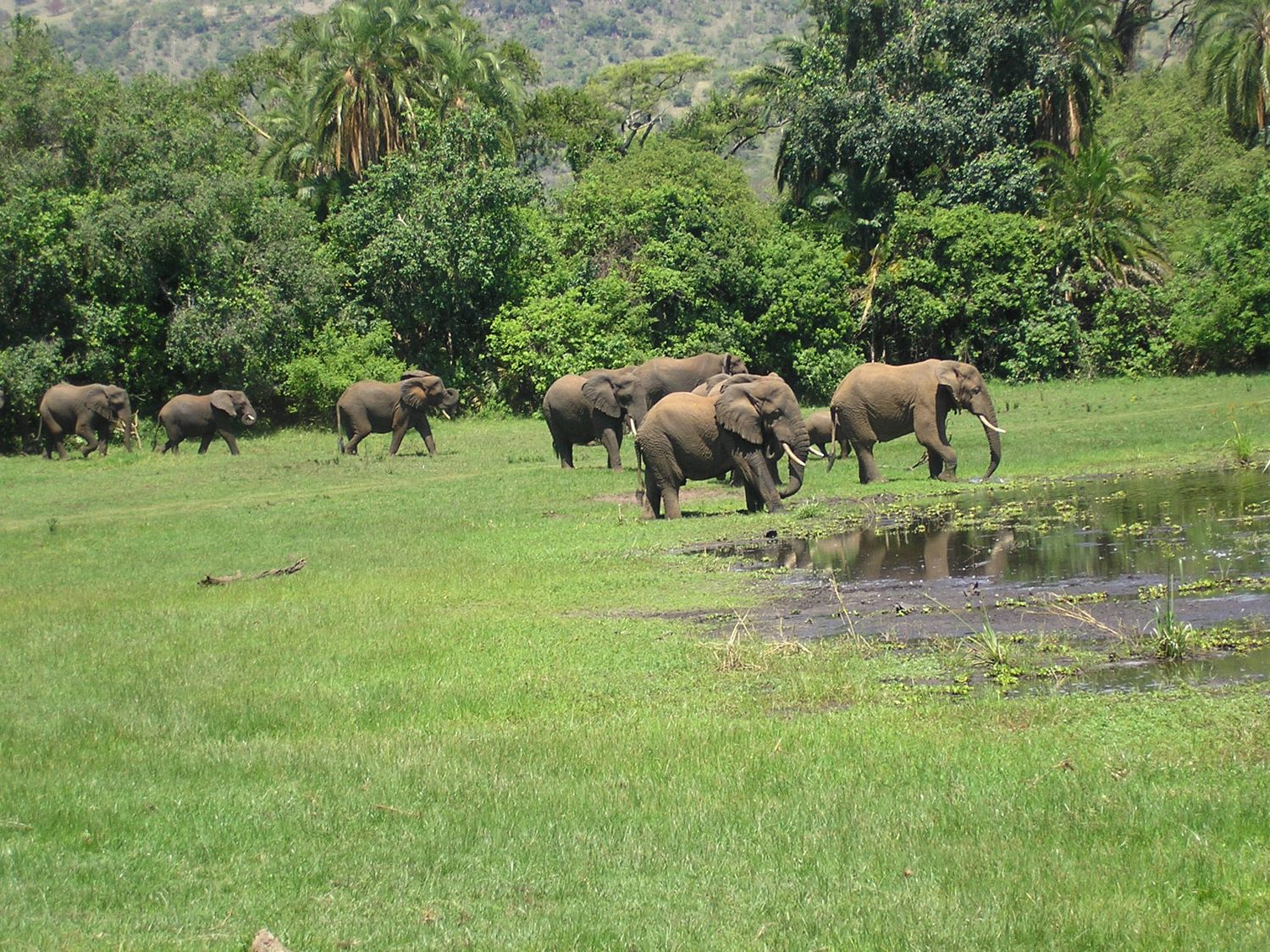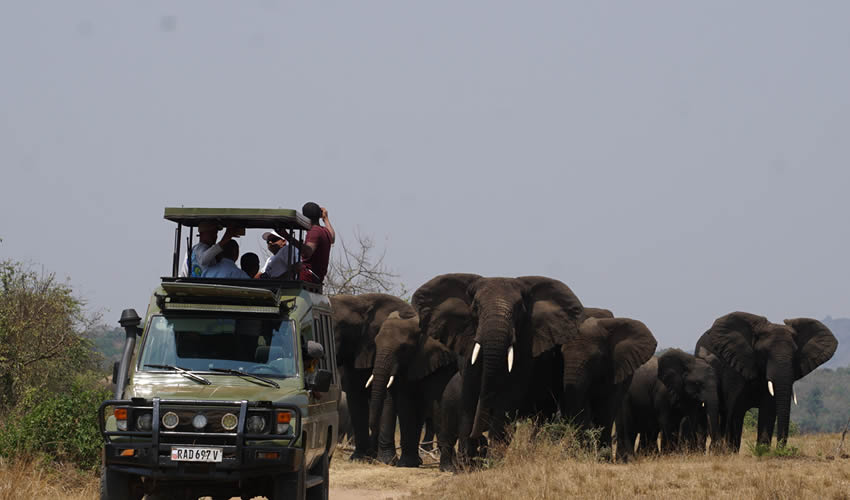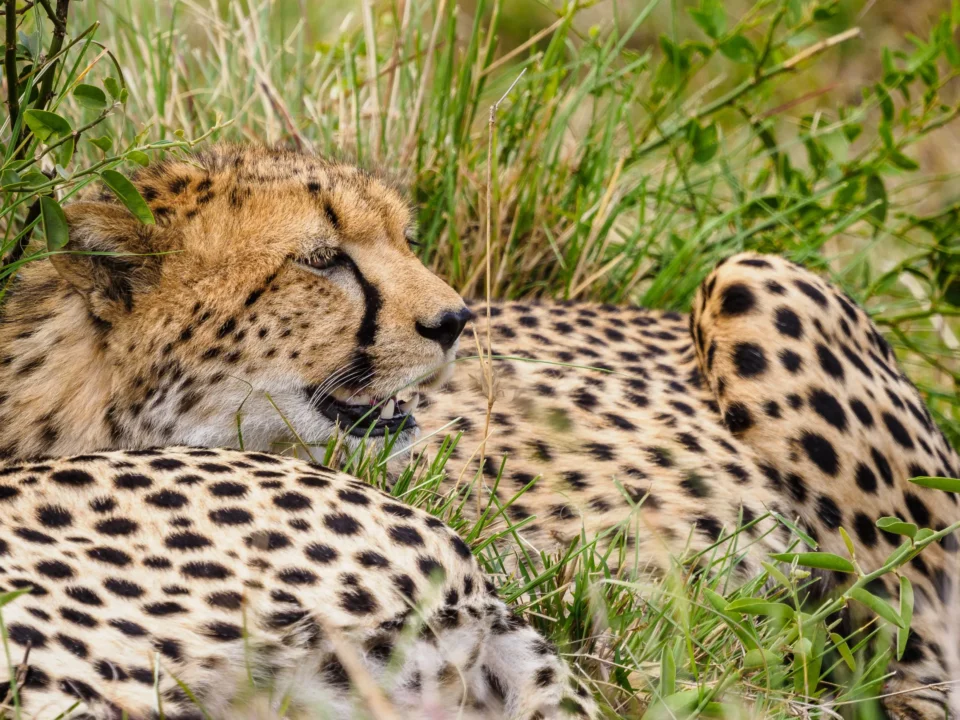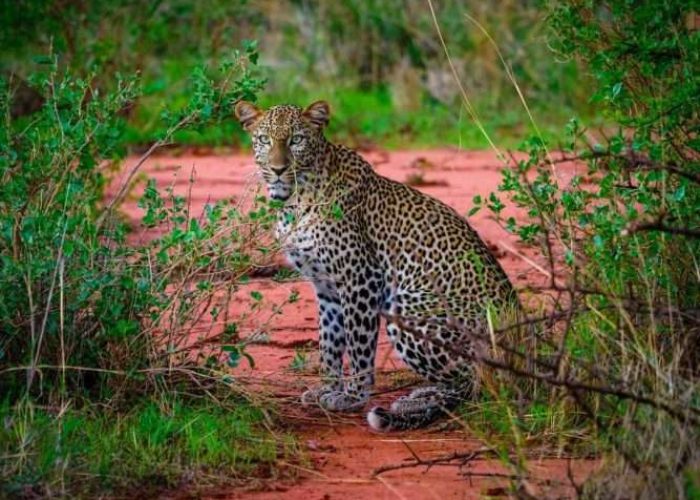- GET IN TOUCH WITH US:
- +256 753518160
- +256 777842166
- info@experiyatourcompany.com

Are there lions in Rwanda?
November 14, 2025
What’s the best itinerary for Rwanda’s national parks?
November 14, 2025Can I See Elephants in Rwanda?
Rwanda, famously known for its mountain gorillas and rich green landscapes, is also a remarkable destination for big game safari enthusiasts. While many travelers associate Rwanda primarily with primates, an increasing number are discovering that the country is home to spectacular savannah wildlife, including the mighty African elephant. The question, “Can I see elephants in Rwanda?” is not only common—it is one of the most exciting inquiries for those planning a safari. The answer is a definite yes. Rwanda is home to a thriving elephant population, primarily found in Akagera National Park, where visitors can experience unforgettable encounters with these majestic creatures. The story of elephants in Rwanda is one of resilience, recovery, and conservation success, showcasing the nation’s dedication to preserving its natural heritage.
The Presence of Elephants in Rwanda: A Historical Perspective
Elephants have roamed Rwanda’s landscapes for centuries, especially across the savannahs and woodlands of the eastern region. Before the 1990s, Akagera National Park hosted a significant elephant population, and these giants played an important ecological role across the park’s vast terrain. However, the aftermath of Rwanda’s 1994 genocide brought overwhelming pressure on the park’s wildlife. With displaced communities seeking land and resources, the park faced encroachment, and poaching soared.
During this turbulent period, elephant numbers declined significantly. Portions of the park were converted for settlement, reducing wildlife habitat and intensifying human-wildlife conflict. Yet despite these challenges, a population of elephants survived deep within Akagera’s rugged areas, protected by remaining forests, wetlands, and the resilience of nature.
The turning point came with the joint management of Akagera by the Rwanda Development Board (RDB) and African Parks in 2010. Together, they implemented strong anti-poaching measures, community outreach programs, and ecological restoration efforts. As a result, the elephant population stabilized and began to grow naturally. Today, elephants have reclaimed their home in Akagera and continue to increase steadily, contributing to the park’s revival as a premier safari destination.
Elephants in Akagera National Park Today
Akagera National Park is now home to more than 120 elephants, and their numbers continue to rise. These magnificent creatures inhabit different parts of the park, but they are most commonly seen in the northern savannah plains and the central woodland areas. The population includes both breeding herds and solitary bulls, offering visitors diverse opportunities to observe elephant behavior in the wild.
Elephants in Akagera can often be found near water sources, especially during the dry season. The park’s lakes—such as Lake Ihema, Lake Hago, and others—serve as important watering points where elephants drink, bathe, and cool off. On hot afternoons, you may see elephants splashing water onto their bodies, playing in the mud, or interacting socially within their herds.
The rewilding and protection efforts in Akagera have created a safe environment for elephants to roam freely. Their expanding presence is a testament to Rwanda’s commitment to wildlife conservation and sustainable tourism, making the country one of the most inspiring safari destinations in Africa.
What It’s Like to See Elephants on Safari in Rwanda
Seeing elephants on safari in Rwanda offers a deeply moving and awe-inspiring experience. These gentle giants, with their immense size and heartfelt intelligence, leave a profound impression on travelers. Game drives often lead visitors through acacia woodlands, open grasslands, and shaded valleys where elephants wander gracefully.
Herds can include mothers with young calves, displaying tender interactions and protective behaviors. Watching a baby elephant learn to use its trunk or walk closely beside its mother is a highlight for many visitors. Solitary bulls are equally fascinating, often seen feeding quietly or walking with slow, confident steps.
What makes elephant sightings in Akagera special is the park’s serene, uncrowded environment. Unlike some safari destinations where multiple vehicles gather around the same animal, Akagera offers a sense of exclusivity. Encounters feel peaceful and intimate, allowing travelers to observe elephants without disruption. The natural beauty of the park—from its golden plains to its lakeside scenes—adds to the sense of wilderness and wonder.
Best Places to See Elephants in Akagera National Park
Although elephants roam widely across Akagera, certain areas increase the likelihood of sightings. The northern plains, rich with grasses and shrubs, are among the best places to encounter elephants on a classic safari. The open landscapes allow visitors to spot herds from a distance, guiding vehicles closer for safe observation.
The central woodlands near Birengero and Mutumba are another favorite elephant habitat. Here, elephants feed on tree bark, leaves, and branches from acacia and eucalyptus trees. The region’s rolling hills and shaded terrain create beautiful backdrops for photography.
Lakeside areas, especially around Lake Ihema, Lake Nasho, and Lake Hago, are excellent too. Elephants frequently approach the water to drink, bathe, or cool down. A boat cruise on Lake Ihema sometimes offers the rare chance to see elephants from the water—an angle that adds a unique dimension to the safari experience.
When Is the Best Time to See Elephants in Rwanda?
Elephants can be seen in Rwanda year-round, but certain seasons enhance the viewing experience. The dry season, which runs from June to September and again from December to February, is considered the best time for elephant sightings. During these months, vegetation thins out and animals gather around water sources, making them easier to spot.
The green season, spanning March to May and October to November, provides lush scenery and beautiful photographic conditions. While sightings may require more patience due to thicker vegetation, the green season offers magical landscapes, dramatic skies, and the possibility of seeing elephants in vibrant environments.
Regardless of the season, elephants are always present in the park, and experienced guides understand their movement patterns, ensuring excellent opportunities for sightings during both morning and afternoon game drives.
The Role of Elephants in Akagera’s Ecosystem
Elephants play a vital ecological role in Akagera National Park. Their feeding habits shape vegetation patterns by opening up dense forests, enabling new plant growth, and creating pathways that benefit other animals. By knocking over small trees or stripping bark, elephants help maintain the savannah landscape, preventing woodlands from encroaching too deeply.
Their interaction with the environment supports a thriving ecosystem where herbivores, carnivores, and birds coexist. Predators such as lions and hyenas rely indirectly on the ecological balance elephants help maintain, while birds build nests in trees shaped by elephant activity.
The presence of elephants also attracts tourism revenue, which supports conservation funding and improves community livelihoods around the park. Elephants symbolize both ecological health and economic opportunity for Rwanda’s wildlife conservation efforts.
How to Maximize Your Elephant-Viewing Experience
While elephants are large and relatively easy to spot, maximizing your chances of a memorable encounter involves a few simple strategies:
• Take guided game drives with knowledgeable rangers who understand elephant behavior and preferred locations.
• Plan early morning or late afternoon drives when temperatures are cooler and elephants are more active.
• Include a boat safari on Lake Ihema, as elephants often approach the shoreline to drink or bathe.
• Spend two or more days in Akagera to explore different habitats and increase the variety of sightings.
Patience is key—some of the best elephant sightings happen when travelers remain still, allowing elephants to approach naturally without feeling disturbed.
What Seeing Elephants in Rwanda Means for Conservation
The ability to see elephants in Rwanda today is a direct result of dedicated conservation efforts. Anti-poaching strategies, community involvement, habitat management, and careful park administration have all contributed to the growth of elephant populations in Akagera. This success story sends a powerful message: with proper management and community collaboration, even threatened species can thrive once again.
Travelers who visit Akagera and observe elephants play a vital role in supporting conservation. Tourism revenue funds wildlife protection, community development, education, and continued restoration of natural environments. Every safari contributes to safeguarding the future of elephants and other wildlife in Rwanda.
Why Elephant Sightings in Rwanda Are Truly Special
Seeing elephants in Rwanda is not just a wildlife moment—it is an emotional experience that connects you to the deep intelligence, grace, and resilience of one of Africa’s most iconic animals. Whether you see a herd crossing the plains, a lone bull feeding quietly near woodlands, or elephants bathing near the lakeshore, each encounter feels deeply meaningful.
Rwanda’s ability to restore and protect elephants reflects its commitment to ecological restoration and sustainable tourism. Visitors leave with not only memories but also a deeper appreciation for the incredible wildlife that calls this beautiful country home.




